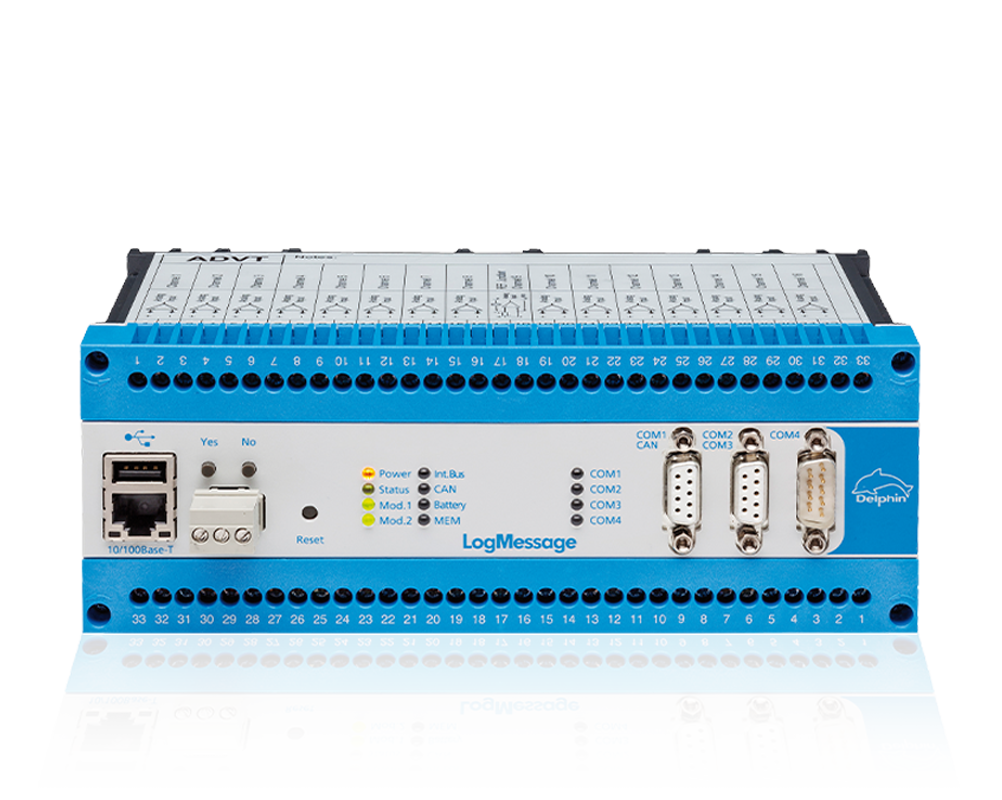What is galvanic isolation?
Galvanic isolation involves interrupting the electrical conduction between two circuits or decoupling two conductive objects from each other. The eponym of galvanic isolation is the Italian physician and biophysicist Luigi Galvani, who discovered galvanism by accident in 1780. If objects are galvanically separated, the electrical potentials are also separated from each other and the circuits are potential-free.
Why is galvanic isolation necessary in measurement technology?
Avoidance of earth current loops with galvanic isolation
In the case of measuring sections with ground reference, occurring earth potential differences can cause distortions, since the signal is not only transmitted via the analogue section, but also partly via the earth. These so-called earth current loops can lead to incorrect evaluation of the signal. Galvanic isolation in the input of the data acquisition unit prevents the occurrence of such earth current loops and thus ensures undistorted signal transmission.
Avoidance of potential shifts with galvanic isolation
By linking several measuring circuits, reference potentials can be undesirably raised. The use of galvanically isolated measuring inputs solves this problem, as they eliminate the influence of the different reference voltages.
Avoidance of electromagnetic interference with galvanic isolation
Especially in applications with long cable runs or in EMC-loaded environments, inductive or capacitive interference in the measuring circuit must be expected. In such cases, galvanic isolation in combination with suitable signal filtering ensures safe and undisturbed transmission of the useful signal.
Galvanic isolation: High-precision measuring inputs
Product testing of electrical equipment requires thermal measurements on electrically live components. Thermocouples or Pt100 sensors may come into contact with mains supply. For this application, it is essential that the measurement device's inputs are galvanically isolated from each other as well as from the mains power supply. Delphin devices for this specific application guarantee isolation of up to 650 VAC between the separate channels, and 1000V AC to the mains power supply. The inputs are suitable to measure thermocouple or Pt100(0) sensors and current and voltage signals.
Practical example of galvanic isolation
Galvanically isolated temperature measurement on household appliances
A German manufacturer of household appliances has equipped its development laboratory with message devices from Delphin. The measuring system has 160 measuring channels distributed across ten test stations. Household appliances ranging from coffee machines to bread makers are tested at the individual test stations. Temperatures are mainly recorded. Other physical variables such as pressure, flow rate and speed are also recorded. The message devices are connected to the workstations via the LAN network. The online and offline evaluation of the measurement results is carried out from the computers using the ProfiSignal. The Message devices' internal data memory is used for continuous testing, which enables data to be recorded without gaps even without a computer.
d
Typical areas of application
of the galvanic isolation
- Thermal testing in household appliances
- Type testing and measurements for quality assurance
- Winding temperature measurement in electrical motors
- Temperature measurement in electronic switches
- Long-term testing of electrical storage heaters
- Measurements to acquire test certificates
- Measurements on lamps and lamp components
Galvanic isolation: Coupling elements in measurement technology
To realise the electrical decoupling required for galvanic isolation, various coupling elements can be considered which transmit electrical signals between the non-conductively connected circuits by means of different physical principles.
Capacitors use an electric field for signal transmission. Transformers generate a magnetic field that transmits the electrical signal into the electrically decoupled secondary circuit by induction. In data acquisition devices, on the other hand, optocouplers are usually used for signal transmission. The optocoupler converts an electrical signal into an optical signal. This signal reaches the receiver, which in turn converts it into an electrical signal. The two circuits are electrically decoupled and the transmission of unwanted artefacts is prevented.
Signal conditioning
Physical or electrical measured values are recorded in systems. These signals must be adapted to standardized signal forms and levels. For example, a pressure measurement is converted to a 0/4..20 mA signal or a temperature measurement to a 0..10 V signal. Converters are used for the purpose of this signal conditioning. In many areas, these are stand-alone devices that are also referred to as isolation amplifiers. Signal conditioning is already built into the Message and Expert devices. Common signals such as Pt100(0), thermocouples, mA or mV signals can be connected directly to the analog inputs.
